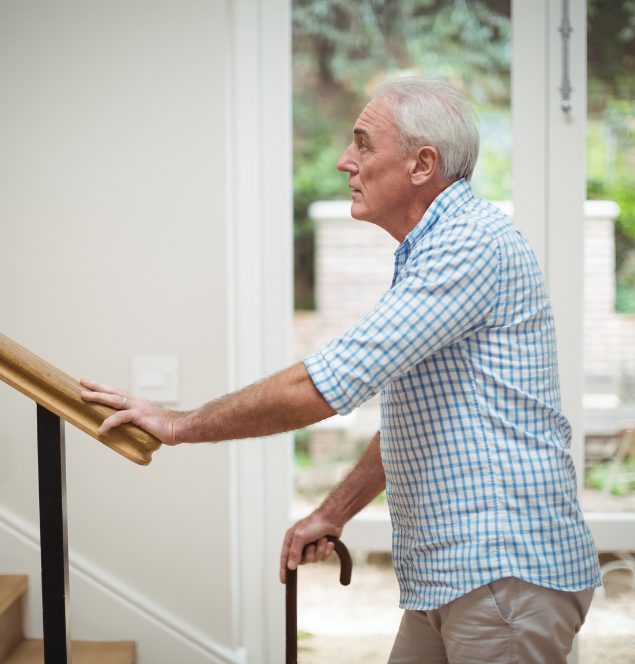As we enter Fall Prevention Week this September, it’s a perfect time to address a concern that’s on the minds of many older adults: staying safe in our homes as we age. I’m Laura Lynn Morrissey, founder of SilverSavvy and a former owner of a busy home care agency. Through my work, I’ve seen firsthand the impact that falls can have on older adults. These ten steps, which I’ve shared with many clients over the years, are simple yet powerful ways to maintain your independence and stay safe at home.
The Desire to Age in Place
The majority of older adults—nearly 90%, according to AARP—want to stay in their own homes as they age. However, as we live longer, often with chronic diseases such as arthritis, heart disease, or diabetes, our risk of falling increases. Falls can lead to serious injuries, hospitalizations, and even a loss of independence. But the good news is that many of these risks are within our control.
Taking proactive steps to make our homes safer doesn’t have to be expensive or complicated. In fact, many of the most effective measures are simple and affordable. And one of the most important—and potentially least costly—actions we can take is to incorporate regular exercise into our daily routine.
1. Assess Your Home Environment
The first step to preventing falls is to evaluate your home. Are there tripping hazards like loose rugs or cluttered walkways? Is the lighting adequate? A thorough home safety assessment is the foundation for creating a safer living space.
Tip: Start with high-traffic areas like hallways, staircases, and the bathroom. These are the most common places for falls to occur.
2. Improve Your Lighting
Good lighting is essential, especially as our vision changes with age. Simple updates like installing brighter bulbs or adding nightlights in hallways and bathrooms can significantly reduce the risk of falls.
Tip: Focus on areas where shadows might obscure your path. Ensuring even lighting can make a big difference.
3. Declutter and Clear Pathways
Clutter is a common cause of falls, but it’s also one of the easiest to fix. Clearing walkways of items like cords, small furniture, and loose rugs can make your home much safer.
Tip: Regularly check your home for items that may have been left in walkways, especially after visitors have been over or if you’ve moved things around.
4. Install Grab Bars and Handrails
Grab bars and handrails are simple additions that provide crucial support in areas like bathrooms and staircases. These installations are relatively inexpensive and can greatly enhance your safety.
Tip: Focus on areas where you might need extra support, such as near the toilet, in the shower, and on both sides of any staircase.
5. Use Non-Slip Flooring
In rooms where the floors are often wet, like the bathroom or kitchen, non-slip mats can prevent dangerous slips. If you’re renovating, consider non-slip flooring options throughout your home.
Tip: Non-slip mats are an easy and affordable solution that can be quickly implemented.
6. Organize for Easy Access
Keep frequently used items within easy reach to avoid unnecessary stretching, bending, or climbing—all common causes of falls. A little reorganization can go a long way in enhancing your safety.
Tip: Consider placing items you use daily on lower shelves or countertops to minimize the need for reaching up or bending down.
7. Schedule Regular Vision and Hearing Checks
Our senses play a crucial role in maintaining balance. Regular eye and ear exams are vital to ensure you’re fully aware of your surroundings and can move safely through your home.
Tip: Make these check-ups a routine part of your health care. Early detection of issues can prevent many accidents.
8. Consider Assistive Devices
If you’re experiencing mobility issues, using assistive devices like canes or walkers can be invaluable. They’re designed to help you stay independent while significantly reducing the risk of falling.
Tip: Work with a healthcare provider to find the right device for your needs. Proper fit and usage are key to effectiveness.
9. Review Your Medications
Certain medications can affect balance and coordination, increasing the risk of falls. Regularly review your medications with your healthcare provider to understand any side effects and make necessary adjustments.
Tip: Don’t hesitate to discuss all your medications with your doctor, including over-the-counter drugs and supplements.
10. Incorporate Regular Exercise – The Most Important Step of All
One of the most effective and least expensive ways to prevent falls is through regular exercise. Strengthening your muscles, particularly in your lower legs and ankles, improves your balance and reduces the risk of falling.
Exercise is not just about physical strength—it’s about maintaining your independence. On a personal note, my husband, who is 63, experienced several falls before realizing that his lower legs and ankles had lost flexibility. Through regular exercise, he’s regained strength and balance, and hasn’t had a fall since.
Tip: Start with simple exercises like calf stretches, ankle rotations, and balance exercises. Even a few minutes a day can make a significant difference. For more robust routines refer to our blog: (Link)
Moving Forward with Confidence
Staying in our homes as we age is not just a preference—it’s a deeply held desire. And while chronic conditions may increase the risk of falls, we have more control over our safety than we might think. By taking these relatively simple and inexpensive steps, you can create a safer environment and continue living independently for as long as possible.
If you’re ready to take the next step toward a safer home, explore the resources we offer at www.silversavvy.com or reach out directly at [email protected]. Together, we can make your home a place where you can thrive.
To You Aging Well,

Laura Lynn Morrissey
Sources
- AARP. “What Is Aging in Place?” AARP.org
- Centers for Disease Control and Prevention (CDC). “Falls Are Leading Cause of Injury and Death in Older Americans.” 2021. CDC.gov

